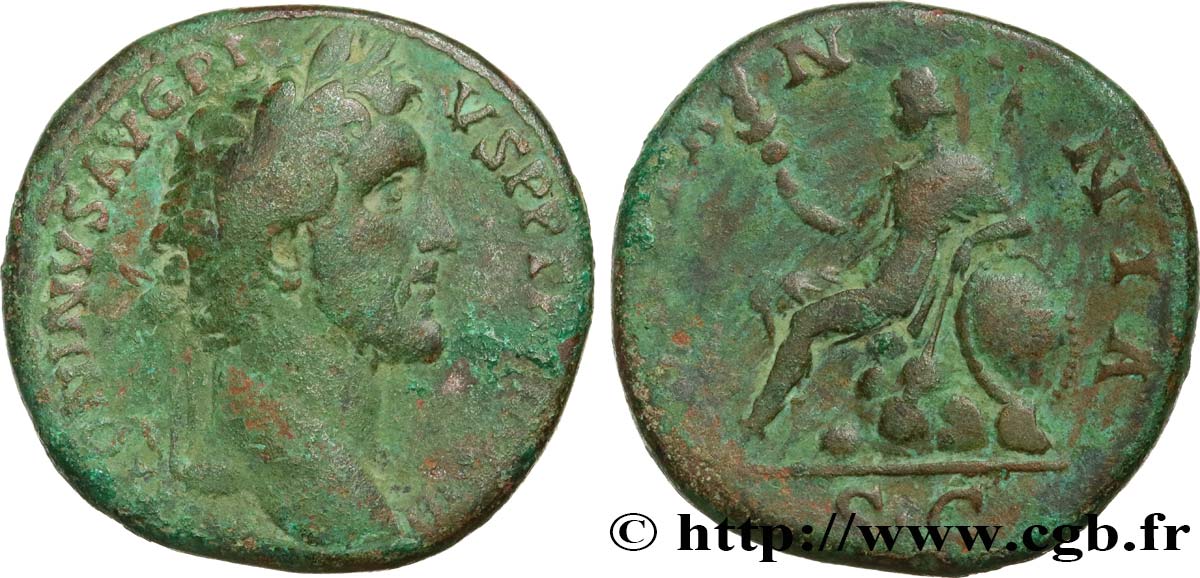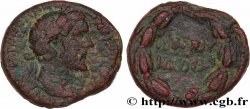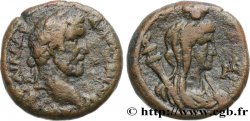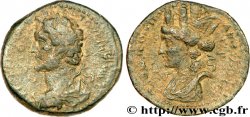brm_561044 - ANTONINUS PIUS Sesterce
Nicht verfügbar.
Artikel auf unserem Online-Shop verkauft (2020)
Preis : 350.00 €
Artikel auf unserem Online-Shop verkauft (2020)
Preis : 350.00 €
Type : Sesterce
Datum: 143
Name der Münzstätte / Stadt : Roma
Metall : Kupfer
Durchmesser : 31,5 mm
Stempelstellung : 12 h.
Gewicht : 23,82 g.
Seltenheitsgrad : R2
Officine: 3e
Kommentare zum Erhaltungszustand:
Monnaie bien centrée. Usure importante mais régulière. L’exemplaire reste bien lisible, surtout au revers. Patine verte
N° im Nachschlagewerk :
Vorderseite
Titulatur der Vorderseite ANTONINVS AVG PI-VS P P TR P COS III.
Beschreibung Vorderseite Tête laurée d’Antonin le Pieux à droite (O*).
Übersetzung der Vorderseite "Antoninus Augustus Pius Pater Patriæ Tribunicia Potestate Consul tertium", (Antonin auguste pieux père de la patrie revêtu de la puissance tribunitienne et du troisième consulat).
Rückseite
Titulatur der Rückseite BRITA-N-NIA/ -|-// S C.
Beschreibung Rückseite Britannia (la Bretagne) assise à gauche sur un rocher, le bras gauche appuyé sur un bouclier ovale et tenant de la main gauche une haste transversale et de la main droite et un étendard.
Übersetzung der Rückseite "Britannia/ Senatus Consulto”, (La Bretagne/ avec l’accord du Sénat).
Kommentare
Rubans de type 2. Revers rare et recherché avec BRITANNIA. Ce type est l’un des plus rares du règne d’Antonin le Pieux et des plus recherchés par nos voisins, les grands bretons. Il est repris modifié sur le revers des monnaies anglaises, des jetons et des médailles depuis le XVIIe siècle.
Type 2 ribbons. Rare and sought-after reverse with BRITANNIA. This type is one of the rarest from the reign of Antoninus Pius and one of the most sought-after by our neighbors, the Great Britons. It has been reproduced, modified, on the reverse of English coins, tokens, and medals since the 17th century.
Type 2 ribbons. Rare and sought-after reverse with BRITANNIA. This type is one of the rarest from the reign of Antoninus Pius and one of the most sought-after by our neighbors, the Great Britons. It has been reproduced, modified, on the reverse of English coins, tokens, and medals since the 17th century.








 Berichten über einen Fehler
Berichten über einen Fehler Die Seite drucken
Die Seite drucken Teilen meiner Auswahl
Teilen meiner Auswahl Stellen Sie eine Frage
Stellen Sie eine Frage Einlieferung/Verkauf
Einlieferung/Verkauf
 Details
Details










